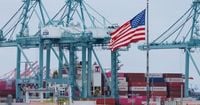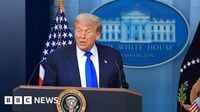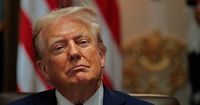The United States Supreme Court is gearing up for what could be one of its most consequential decisions in recent years: whether President Donald Trump’s sweeping global tariff regime is legal. The announcement came on September 9, 2025, sending ripples through the business community, legal circles, and international trade partners alike. The Court’s decision to hear oral arguments in the first week of November, on an expedited schedule, signals the urgency and gravity of the matter, with billions of dollars and the balance of power between Congress and the executive branch at stake, according to Roll Call and BBC.
At the heart of the dispute are tariffs imposed by President Trump under the International Emergency Economic Powers Act of 1977 (IEEPA), a law originally intended to grant the president the ability to respond rapidly to unusual and extraordinary threats to national security, foreign policy, or the economy. Trump’s tariffs, ranging from 10% to 50% on dozens of trading partners—including China, Mexico, and Canada—were justified as necessary to combat trade imbalances and stem the flow of illegal drugs like fentanyl, as reported by NPR and USA Today.
Trump’s administration has touted the tariffs as a major economic success, with the Treasury Department stating that over $130 billion in revenue has been collected so far in 2025, including $28 billion in July alone. The Congressional Budget Office estimates that, if left unchanged, the tariffs could contribute $4 trillion to deficit reduction through 2035. Solicitor General D. John Sauer, defending the administration’s position, argued in government briefs, “With tariffs, we are a rich nation; without tariffs, we are a poor nation.” President Trump himself declared, “One year ago the United States was a dead country, and now, because of the trillions of dollars being paid by countries that have so badly abused us, America is Strong, financially viable, and respected country again.” (NPR)
Yet, the legality of these sweeping tariffs is hotly contested. Two lower courts—the U.S. Court of International Trade and the U.S. Court of Appeals for the Federal Circuit—have ruled that Trump exceeded his authority, finding that Congress, not the president, holds the constitutional power to set tariffs. The Federal Circuit’s 7-4 decision last month invalidated the tariffs, setting the stage for the Supreme Court showdown. The majority opinion emphasized that the IEEPA does not grant the president the sweeping authority to impose global tariffs of unspecified duration, as Trump has done. According to BBC, Trump criticized the appeals court’s ruling on Truth Social, stating, “If allowed to stand, this Decision would literally destroy the United States of America.”
The cases before the Supreme Court—Donald Trump et al. v. V.O.S. Selections et al., and Learning Resources, Inc., et al. v. Donald Trump et al.—are combined challenges from states and businesses. These challengers, including small businesses and a dozen states, argue that the tariffs are unlawful and have caused profound harm, particularly to small enterprises. As described in their Supreme Court brief, “for the first time in American history [Trump has] imposed massive tariffs far exceeding anything enacted by Congress,” resulting in “profound harms” to American businesses. They further contend that if the tariffs are upheld, the statute would be expanded to “give the President overnight the power to tax every corner of the economy that is subject to regulation.”
The business community, normally supportive of many Trump initiatives, has rebelled against the tariffs, with some companies warning of bankruptcy if the levies remain in place. V.O.S. Selections Inc., a wine and spirits importer, and Plastic Services and Products, a pipe and fittings company, are among the businesses leading the charge. In one particularly pointed argument, the challengers wrote, “Taxing Tomatoes does not deal with fentanyl,” questioning the administration’s justification for the tariffs under the IEEPA.
Trump’s legal team, for its part, maintains that invalidating the tariffs would “eviscerate a critical tool for addressing emergencies” and “transform judges into foreign-policy referees,” potentially allowing other nations “to hold America’s economy hostage to their retaliatory trade policies.” Solicitor General Sauer also pointed to historical precedent, noting that other presidents have imposed tariffs dating back to 1813. However, opponents counter that no prior president has ever used the IEEPA to impose tariffs of this breadth or duration.
Should the Supreme Court rule against the tariffs, the consequences could be staggering. The government estimates that nearly a trillion dollars in tariffs have been collected from U.S. and foreign businesses under Trump’s executive order—money that could have to be refunded. Trade deals already negotiated with countries like the UK and Japan, as well as ongoing negotiations, could be thrown into disarray. Trump himself, in a recent Truth Social post, insisted that negotiations with India were continuing smoothly: “I feel certain that there will be no difficulty in coming to a successful conclusion.” (BBC)
It’s important to note that not all of Trump’s tariffs are at issue in this case. Levies imposed on steel, aluminum, and cars, for example, were enacted under different legal authorities and are not directly affected by the Supreme Court’s review. The current challenge focuses specifically on tariffs imposed under the IEEPA, including the so-called “Liberation Day” tariffs and those targeting fentanyl-related imports, which range from a 10% baseline for most countries to 34% for China and 25% on some goods from Canada, China, and Mexico.
The Supreme Court’s decision to fast-track the case is notable. Legal experts suggest that the justices are aware of the high stakes, both financially and politically. The Court’s 6-3 conservative majority has often sided with Trump in the early months of his second term, but some observers believe there may be skepticism about granting the executive such broad tariff powers. The Court has previously invoked the “major questions doctrine” to limit executive authority when Congress has not clearly delegated specific powers, as seen in its rejection of President Biden’s student loan forgiveness plan.
As the Supreme Court prepares to hear arguments in November, the world is watching. The outcome will not only determine the fate of Trump’s signature economic policy but could also reshape the contours of presidential power and congressional authority for years to come. For American businesses, global trading partners, and policymakers, the stakes could hardly be higher. The ruling, expected before the end of June 2026, will answer a fundamental question: just how far can a president go in imposing economic measures under the banner of national emergency?
With billions of dollars, the U.S. economy, and the separation of powers on the line, the Court’s forthcoming decision promises to reverberate far beyond the marble halls of Washington.


